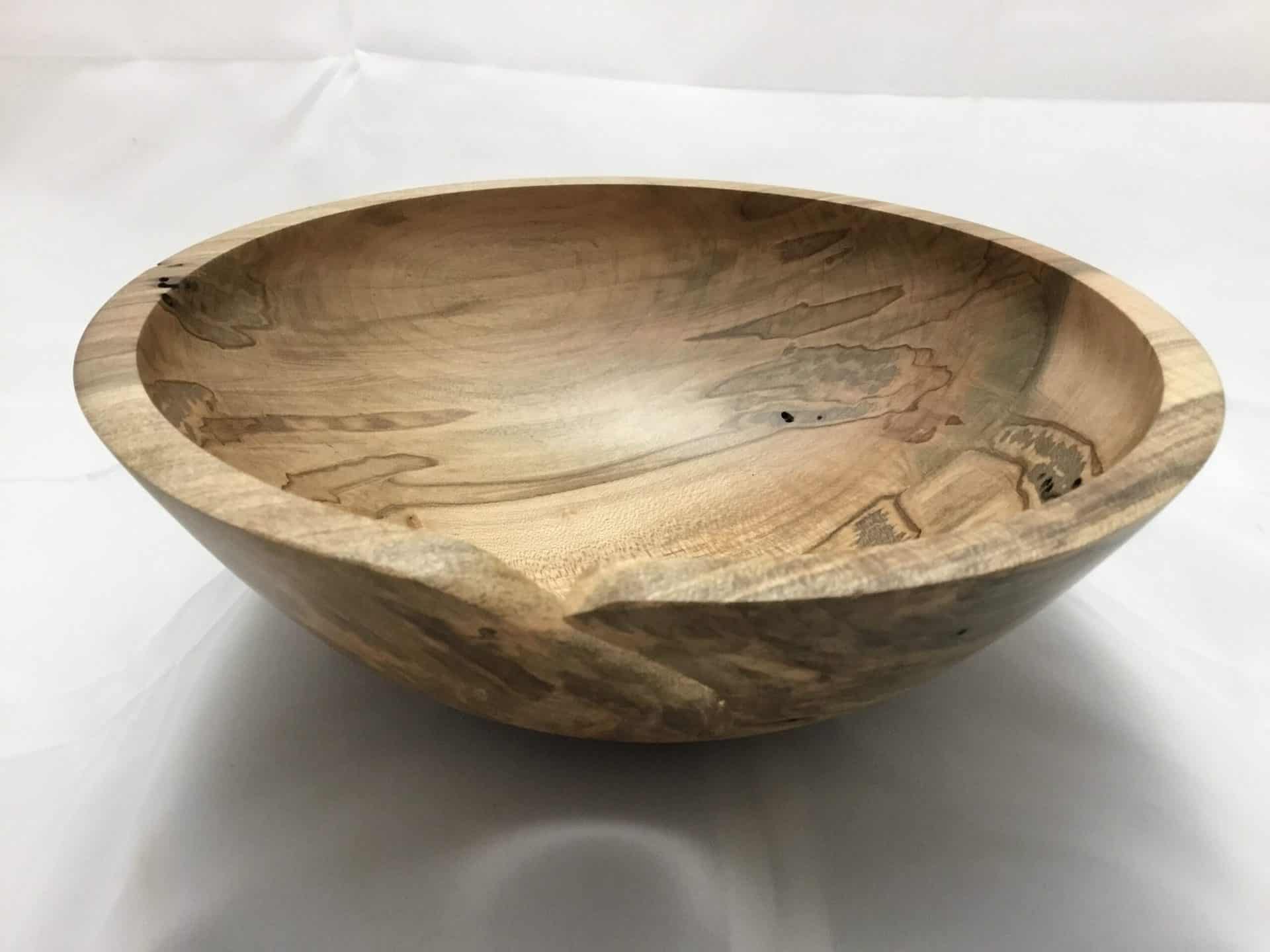Mike McKinney is a fourth-generation woodworker who had an opportunity to work in the shop with both his dad and granddaddy. His granddaddy, Paul, was his most impressive hero and was very pleased when Mike was with him in the shop. “Granddaddy made me a workbench from an old wooden crate, he attached a V-block for planing against, gave me a Staley #4 plane, a hammer, all the nails I wanted, a handsaw, and scraps of wood. He was happy for any time I might be able to spend with him”.
Mike’s daddy, David, was a furniture builder. He bought a Delta lathe in 1960 which he intended to turn spindles and rounds with. He began to see bowls turned (Rudy Osolink was his inspiration) and became an accomplished side grain turner after Mike left home.
In 1993, David visited Mike in Murphy, NC for the purpose of visiting Lissi Oland’s open house and shop space she had revamped after the death of her husband Knud. Mike was intriqued with Lissi’s work which he would call, “rustic, natural edge, original”, very well shaped and finished with mineral oil, all kinds of forms, vessels, pots, etc.
So with that inspiration, Mike asked his dad, “how much would it cost for me to start turning? $500?” His dad responded, “No son, it would cost a lot more than that”. He began combing the pages of the local advertiser and found an ad where a fellow wanted to sell his lathe, tools, and a workbench for $150. That was the beginning, a cheap entry-level (or below) tabletop lathe with enough spindle tools to work and a “want to” to learn.
Mike brought the lathe home and set it down in a vacant corner in the garage. After a short span of time his wife, Vanessa, said, “What are you going to do with that?” The only truthful answer he could think of was, “Maybe I’ll make some shavings.”
A few weeks later after lots of shavings, he (sort of) completed a pretty little bowl. He carried it to Vanessa, “Do you think I could learn to make bowls?” Her answer was, “I think you have.”
Mike knew there would be many more shavings, skill learning, and refinement; he still knows that fact. He would tell you today he tries to learn something each time he works in his shop.
Mike was active in the NC Woodturners group while his dad’s health allowed him to go, and currently, the Carolina Mountain Woodturners where, in both clubs, he has had the benefit of seeing and hearing world-class woodturners describe “what and how they do it”. He took a week-long class with John Jordan (his favorite woodturner) at Appalachian Center for Craft in 1994. He might say he is self-taught but would give a lot of credit for these exposures. He says, “The turning clubs and associations are so very helpful and informational to turners and collectors at any level.”
For several years Mike was not turning as his career as a banker progressed and he had not taken the time to have a place to work. In the winter of 2006, he found himself homebound due to the cold and snowy weather. He pulled out his lathe and some tools and found out how much he enjoyed and missed turning. Within a few months, his shop was designed, planned, and under construction.
Mike reports, “That was a great day when the shop was complete”. Very few days have passed since that Mike is not doing something in the shop.
Today, you may find Mike roughing or finishing his utilitarian wares, working on a natural edge bowl, making a lid for a lidded bowl, turning an ornament, or possibly embellishing a near-finished piece. He enjoys each operation and hopes to be turning, learning, and helping others for years to come.
Artist Statement:
Turning wood is a mesmerizing activity and wood itself is a wonderful medium, because of density, grain patterns, figure, voids, insect deterioation, species, and the options it may present, which are many. None of the before mentioned trump final form, and my quest is to develop the best form available and maximize the attractiveness and usefulness so the piece may be measured as “well done”. Wood lends itself to be held, touched, felt for the subtles that may only be visible when handled. I enjoy making both utilitarian vessels and pieces that may be highlighted as show pieces, “in a way, both serve their purpose” to be something the owner is proud for people to see.





